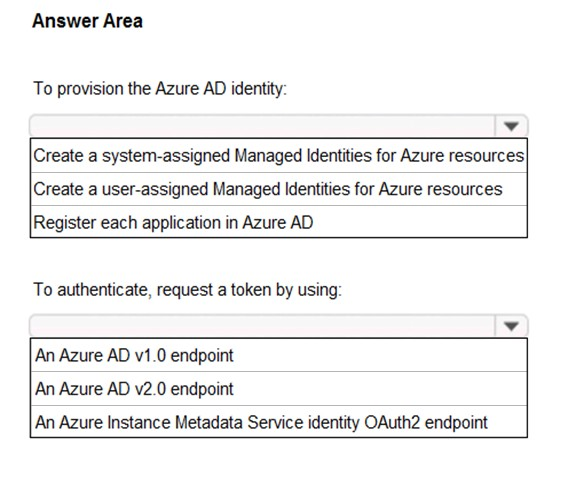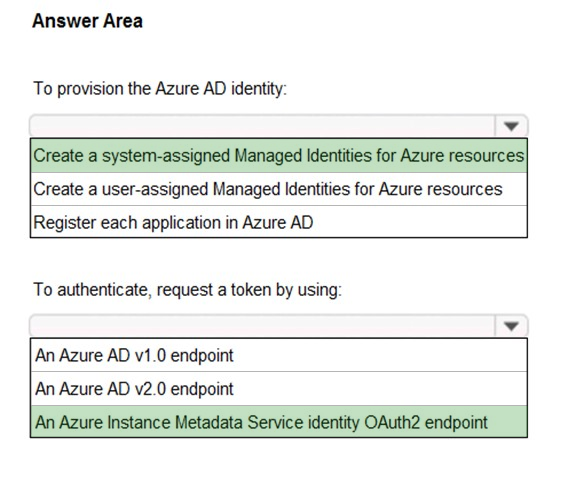

HOTSPOT -
You have five .NET Core applications that run on 10 Azure virtual machines in the same subscription.
You need to recommend a solution to ensure that the applications can authenticate by using the same Azure Active Directory (Azure AD) identity. The solution must meet the following requirements:
✑ Ensure that the applications can authenticate only when running on the 10 virtual machines.
✑ Minimize administrative effort.
What should you include in the recommendation? To answer, select the appropriate options in the answer area.
Hot Area:

andyR
Highly Voted 4 years, 7 months agoMaxBlanche
4 years, 7 months agoidrisfl
4 years, 7 months agodandirindan
4 years, 4 months agoElsaBBP
4 years, 4 months agonandacharya3
Highly Voted 4 years, 2 months agoJayBee65
3 years agochina5000
3 years, 5 months agoMr_wippy
3 years, 3 months agoCg007
Most Recent 1 year, 2 months agoOne111
2 years, 10 months agoOne111
2 years, 10 months agoAberdeenAngus
3 years, 1 month agopillow2274
3 years, 2 months agoexnaniantwort
3 years, 3 months agoAD3
3 years, 3 months agoplmmsg
3 years, 3 months agous3r
3 years, 5 months agoMARKMKENYA
2 years, 4 months agoDonBoat
3 years, 5 months agostudent22
3 years, 8 months agosyu31svc
3 years, 9 months agonkv
3 years, 9 months agoexamineezer
3 years, 6 months agoGautam1985
3 years, 10 months agoteehex
3 years, 10 months agopentium75
3 years, 10 months ago